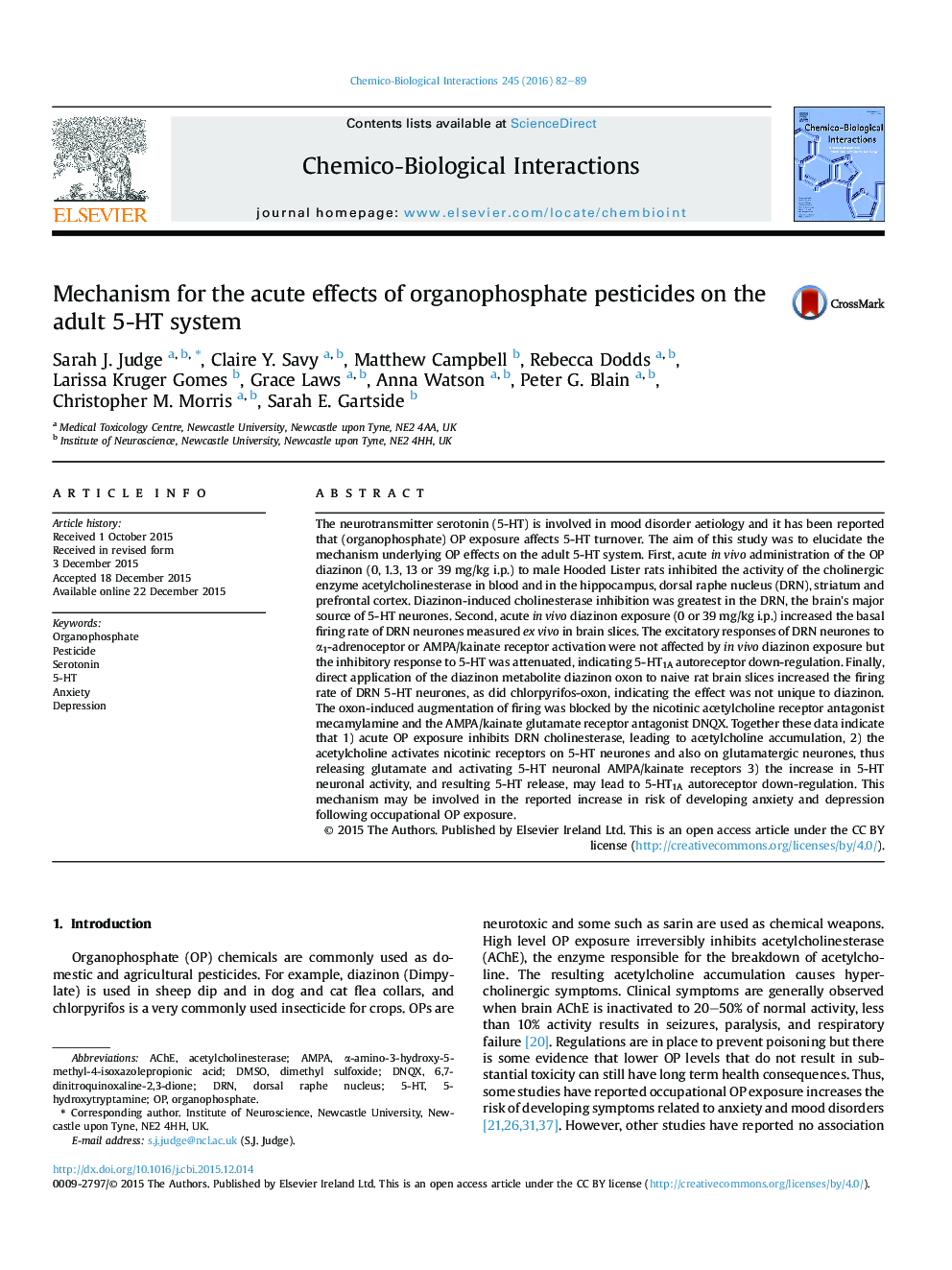| Article ID | Journal | Published Year | Pages | File Type |
|---|---|---|---|---|
| 5847711 | Chemico-Biological Interactions | 2016 | 8 Pages |
â¢Organophosphate exposure inhibits dorsal raphe nucleus cholinesterase activity.â¢Organophosphate oxon exposure activates 5-HT neurones in the dorsal raphe nucleus.â¢Nicotinic and AMPA receptors mediate the oxon-induced activation of 5-HT neurones.â¢Organophosphate exposure attenuates the response to 5-HT1A autoreceptor activation.
The neurotransmitter serotonin (5-HT) is involved in mood disorder aetiology and it has been reported that (organophosphate) OP exposure affects 5-HT turnover. The aim of this study was to elucidate the mechanism underlying OP effects on the adult 5-HT system. First, acute in vivo administration of the OP diazinon (0, 1.3, 13 or 39 mg/kg i.p.) to male Hooded Lister rats inhibited the activity of the cholinergic enzyme acetylcholinesterase in blood and in the hippocampus, dorsal raphe nucleus (DRN), striatum and prefrontal cortex. Diazinon-induced cholinesterase inhibition was greatest in the DRN, the brain's major source of 5-HT neurones. Second, acute in vivo diazinon exposure (0 or 39 mg/kg i.p.) increased the basal firing rate of DRN neurones measured ex vivo in brain slices. The excitatory responses of DRN neurones to α1-adrenoceptor or AMPA/kainate receptor activation were not affected by in vivo diazinon exposure but the inhibitory response to 5-HT was attenuated, indicating 5-HT1A autoreceptor down-regulation. Finally, direct application of the diazinon metabolite diazinon oxon to naive rat brain slices increased the firing rate of DRN 5-HT neurones, as did chlorpyrifos-oxon, indicating the effect was not unique to diazinon. The oxon-induced augmentation of firing was blocked by the nicotinic acetylcholine receptor antagonist mecamylamine and the AMPA/kainate glutamate receptor antagonist DNQX. Together these data indicate that 1) acute OP exposure inhibits DRN cholinesterase, leading to acetylcholine accumulation, 2) the acetylcholine activates nicotinic receptors on 5-HT neurones and also on glutamatergic neurones, thus releasing glutamate and activating 5-HT neuronal AMPA/kainate receptors 3) the increase in 5-HT neuronal activity, and resulting 5-HT release, may lead to 5-HT1A autoreceptor down-regulation. This mechanism may be involved in the reported increase in risk of developing anxiety and depression following occupational OP exposure.
